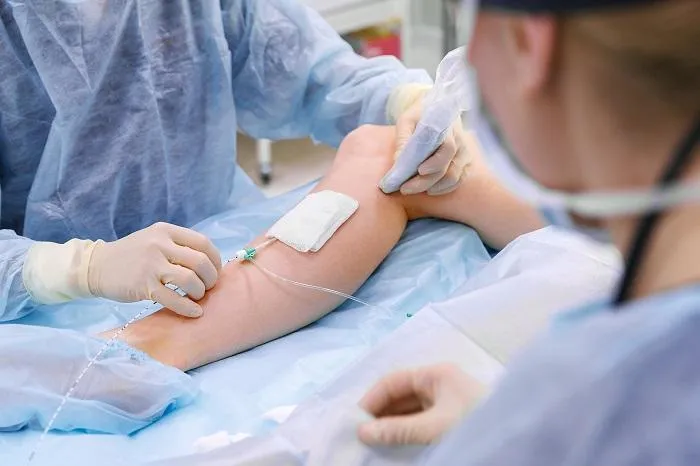How Crucial Is Vascular Surgery
May 30, 2022
Vascular surgery
It is a specialised branch of surgery involving any blockage, plaque, or valve obstruction in the arteries and veins of the vascular system, including the body's lymphatic system.
Vascular disease can occur to anyone. The following are the risk factors for vascular diseases:
- Ageing
- Hereditary
- Sex: Females are more prone to vascular diseases
- Pregnancy
- High cholesterol
- Hypertension
- Sedentary lifestyles
- Obesity
- Smoking
- Alcoholism
- Diabetes
- Lack of physical activity
Surgery is crucial for life-threatening conditions such as vascular disease, which may lead to stroke or heart attack. One should always keep a list of ‘vascular doctors near me’ or ‘vascular surgeons near me’ to prevent accidents.
Common vascular diseases are as follows:
Abdominal aortic aneurysm
Aorta is the largest artery in the whole body, supplying blood directly from the heart. An aneurysm is an abnormal bulge formation in the wall of the aorta, which prevents smooth blood flow to the lowest parts of the body.
Peripheral artery disease (PAD)
Atherosclerosis is the development of hard plaques in the arterial walls, which clogs the arteries and narrows them. Any such condition that affects the arms and legs, i.e. the peripheral vascular system, is known as PAD.
Varicose veins
Enlarged bulging of the leg and feet veins caused by any damage in the valves, resulting in blood accumulation. It is mostly harmless but is considered un-aesthetic and needs to be removed if it causes pain.
Arteriovenous fistula (AV)
AV fistula is an abnormal adjoining of an artery with a vein directly. In general, blood flows from the arteries to the capillaries in the body cells and then to the veins. But due to AV fistula, the adjoining capillaries of the artery receive no blood, and hence the cells lack oxygen and nutrition.
What are the various Vascular surgeries?
There are various vascular surgical procedures available for treating any vascular disease and can be classified broadly into the following two basic segments:
Open surgery
The surgeon makes an extensive incision to open the diseased vascular part and treat the deficient portion.
Endovascular surgery
It is a non-invasive mode of surgery, wherein a long catheter (a small flexible tube) is inserted into the patient’s body guided by an X-ray to reach the diseased area and mend it. It requires a lot of skill and precision.
Following are some of the common vascular surgeries available for vascular treatment.
Angioplasty with or without stenting
During this, the cardiovascular surgeon inserts a balloon with the help of a catheter, which is inserted through an artery in the groin area to the narrowed arterial area. The balloon is then inflated to open up the artery. Sometimes a stent (a metal tube or wire mesh) is also inserted to keep the balloon in place or prevent any further narrowing of the artery post-surgery.
Atherectomy
A specialised catheter with a sharp blade end is inserted into the artery to slash off plagues from a blood vessel. It is used mostly to treat PAD and for patients with dialysis.
Arteriovenous (AV) fistula surgery
This surgery creates an artificial connection between an artery and a vein, mostly in the forearm area. This creates a strong vein and the appropriate entry point for dialysis in patients with renal failure.
Arteriovenous (AV) graft
This is similar to AV fistula. It creates access points for dialysis but is performed in patients lacking appropriate veins for connecting a fistula. Here, an artificial graft of synthetic fabric is stitched between an artery and a large vein located in the armpit or elbow area to form a watertight cylinder.
Thrombectomy
In this, the cardiovascular surgeon makes a surgical incision of a blood clot in a vein or artery, either using a catheter for aspiration of the clot or mechanical thrombectomy to break it open.
Vascular bypass surgery
Bypass surgery is performed by taking a healthy part of the artery from the leg, arm or other body parts and grafting it with the aorta and the other end of the blocked artery, thereby bypassing the blood flow smoothly.
This is an open surgery and needs extensive post-operative care.
Endarterectomy
This is another open surgery where plaques are surgically removed by cutting open the blood vessel and then stitching them back. It is mostly performed in blocked carotid arteries situated at both sides of the neck that supply blood to the brain and face.
Femoral endarterectomy is performed for blocked blood vessels in the legs.
What is the recovery process after vascular surgery?
Generally, the recovery period is 1 to 2 weeks depending on the surgery.
Bruises, swelling, and pains post-surgery subside within 2 weeks.
Patients must start walking slowly as soon as possible and get back to normal life. Patients must avoid strenuous activities such as running and jumping for at least 2 weeks.
For patients with bypass surgery and angioplasty, full recovery requires almost 8 weeks.
Request an appointment at Apollo Spectra Hospitals, Call 18605002244
NOTICE BOARD
CONTACT US
CONTACT US
 Book Appointment
Book Appointment


.svg)
.svg)
.svg)
.svg)








